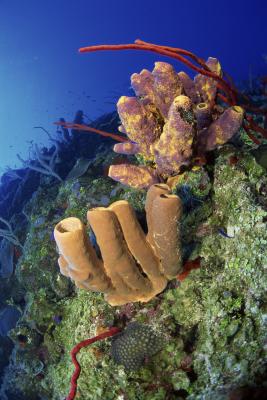Sponges do not have heads or tails. They are basal metazoans characterized by a lack of true tissue (with a few exceptions), sensu stricto of the muscle or nervous system, gastrointestinal cavities, and gonads.
Does the sponge have a head?
Since the sponge is sessile and does not move, it filters water to feed. .. You might think that the sponge doesn't look like an animal. They have no head or legs. Internally, there are no brains, stomachs or other organs.
Does the sponge have a skull?
Invertebrates, or invertebrates, are animals that do not contain bone structures such as skulls and vertebrae. The simplest of all invertebrates is the sponge, which contains only the sponge phylum ([Figure 1]).
What are the characteristics of sponges?
Characteristics of the sponge phylum They are generally marine aquatic organisms and there are several freshwater species. Their bodies are asymmetric. The body shape can be cylindrical, vase-like, round, or sac-like. They are ectoderm animals with two layers, the outer dermis and the inner gastric layer.
What are the three characteristics of sponges?
What are the characteristics of the sponge phylum? These are multicellular animals with pores. The body has no organs. Shows horozoic nutrition. The body is radially symmetrical. You can play the lost part. Features and examples of sponge phylum-Byjus

Below you will find two helpful answers on a similar topic. 👇
How many types of sponges are there?Why are sponges classified as sessile?
